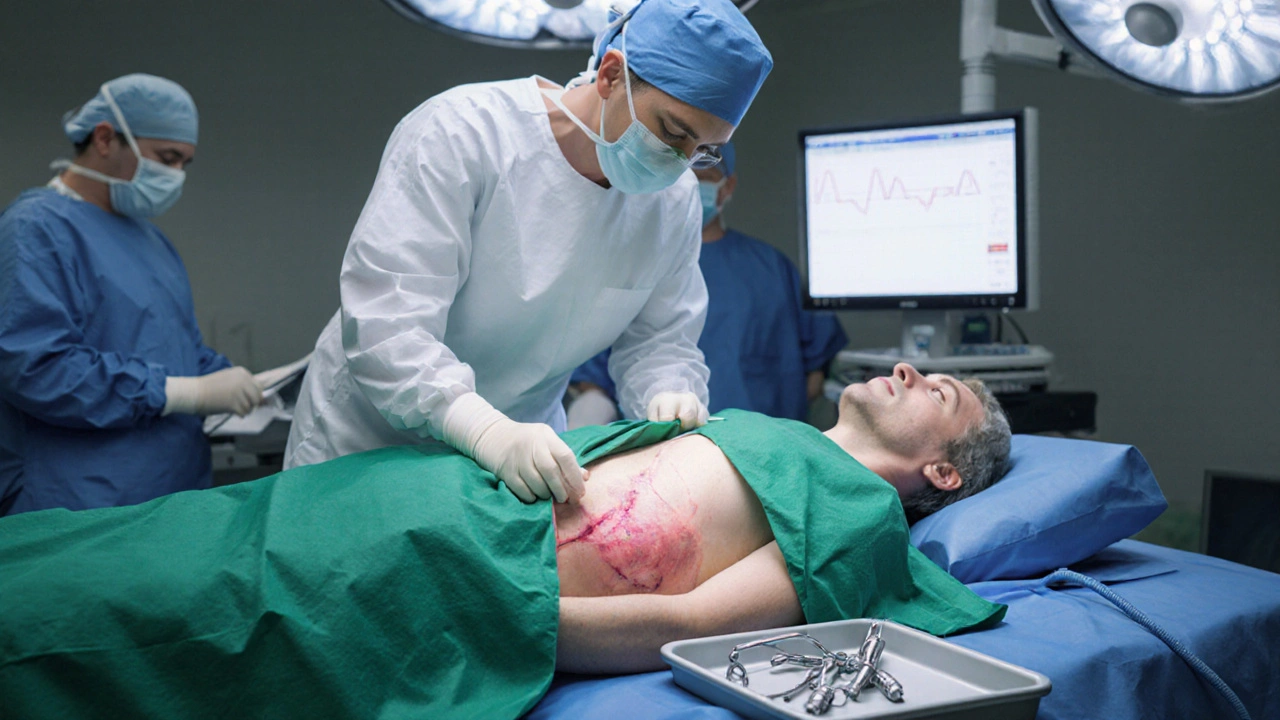Knee Surgery Recovery: What You Need to Know
When you hear knee surgery recovery, the period after a knee operation when tissue heals, strength returns, and daily activities become easier again. Also called post‑operative knee rehab, it isn’t just a timeline—it’s a mix of pain control, swelling reduction, and gradual movement. Understanding how each piece fits helps you avoid setbacks and get back on your feet faster.
One of the most common procedures driving this process is knee replacement, a surgery that swaps damaged joint surfaces with artificial components. Because the new implant must bond with bone, the body’s healing response is intense. This surgery requires careful monitoring of inflammation and early mobilization, making it a central pillar of any knee surgery recovery plan.
Swelling is the body’s natural alarm system, but when it spikes after a joint operation it can stall progress. Orthopedic swelling, the excess fluid that builds around the knee, often feels like a tight band and limits range of motion. Managing this swelling with ice, compression, and appropriate medication is crucial because high swelling influences pain levels and delays the start of safe exercises.
Once swelling eases, physical therapy, a structured program of guided movements, becomes the engine that powers recovery. Physical therapy encompasses strength training, gait training, and flexibility drills, all designed to restore function without overloading the fresh implant. The therapist tailors the plan to your pain level, so you can steadily increase activity without risking injury.
Post‑operative pain isn’t just a discomfort—it’s a signal that can either protect the joint or, if poorly managed, keep you from moving enough to heal. Effective pain control often combines prescribed meds, swelling reducers, and non‑drug methods like gentle stretching. When pain stays under control, you’re more likely to follow your physical‑therapy schedule and achieve better mobility.
Mobility isn’t only about walking; it’s about confidence in everyday tasks—getting up from a chair, climbing stairs, or even playing with kids. Each small victory reinforces the brain’s perception of a healed knee, which in turn reduces fear‑avoidance behavior. That mental boost is why many clinicians stress early, safe movement as a cornerstone of knee surgery recovery.
Below you’ll find a curated collection of articles that dig deeper into each of these topics—pain management tricks, swelling‑control tips, step‑by‑step rehab guides, and personal stories from people who’ve walked the same road. Use them to build a recovery plan that fits your schedule, pain tolerance, and lifestyle, and keep moving forward with confidence.

Total Knee Replacement Pain: What to Expect Before, During and After Surgery
Explore the real level of pain from a total knee replacement, from anaesthesia to recovery, with clear timelines, pain‑control tips and a quick FAQ.
read more
Knee Replacement Stiffness: Will It Ever Go Away?
Many struggle with stiffness after knee replacement. This article reveals how long it lasts, when it goes away, and real tips to bring your knee back to life.
read more
Driving After Knee Surgery: How Soon is Safe & What You Must Know
Thinking of driving 2 weeks after knee surgery? Discover what doctors say, legal risks, real recovery timelines, and what happens if you rush. Read before turning that ignition.
read more
Peeing After Knee Replacement: Tips for a Smooth Recovery
Struggling to use the loo after knee replacement? Discover how to pee with less pain and risk, plus real tips for handling bathroom visits safely post-surgery.
read more



